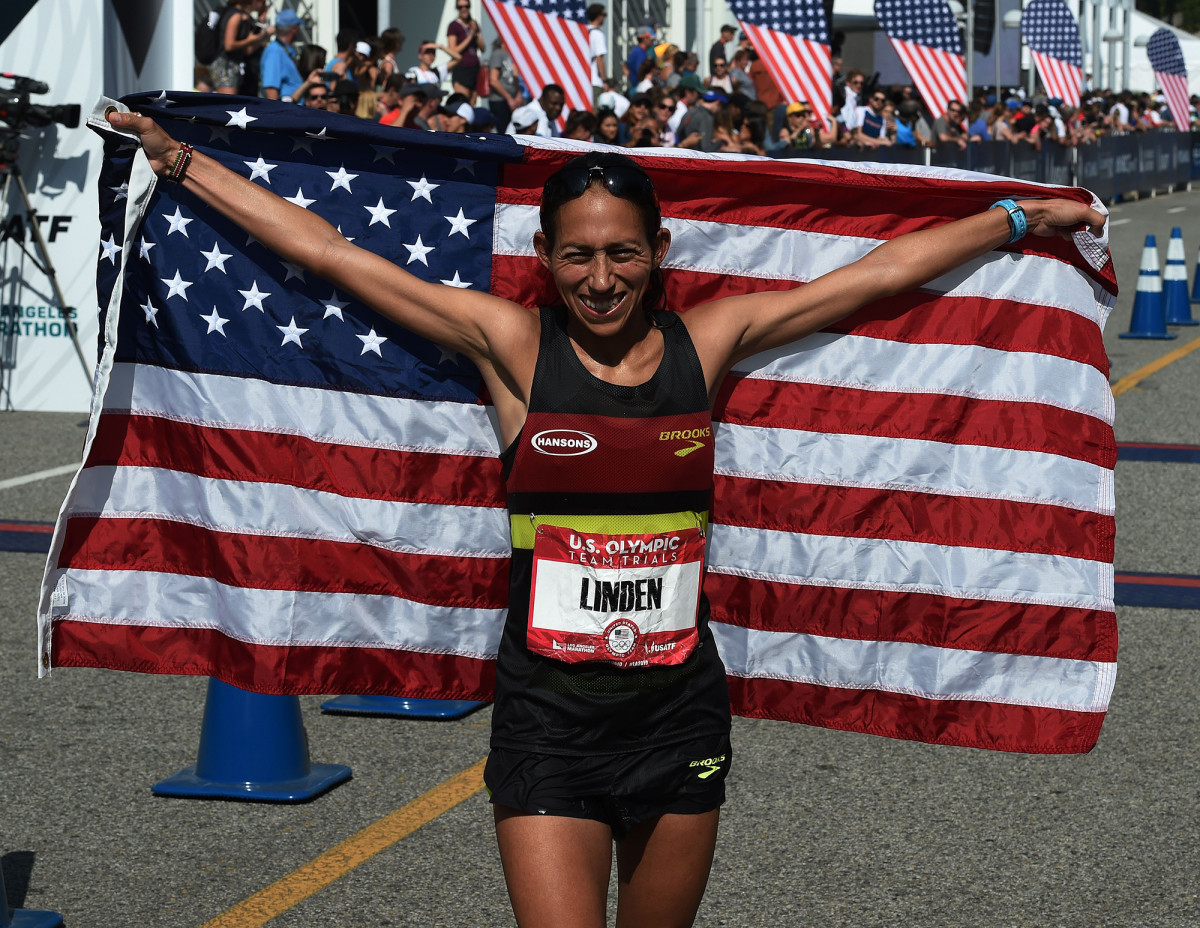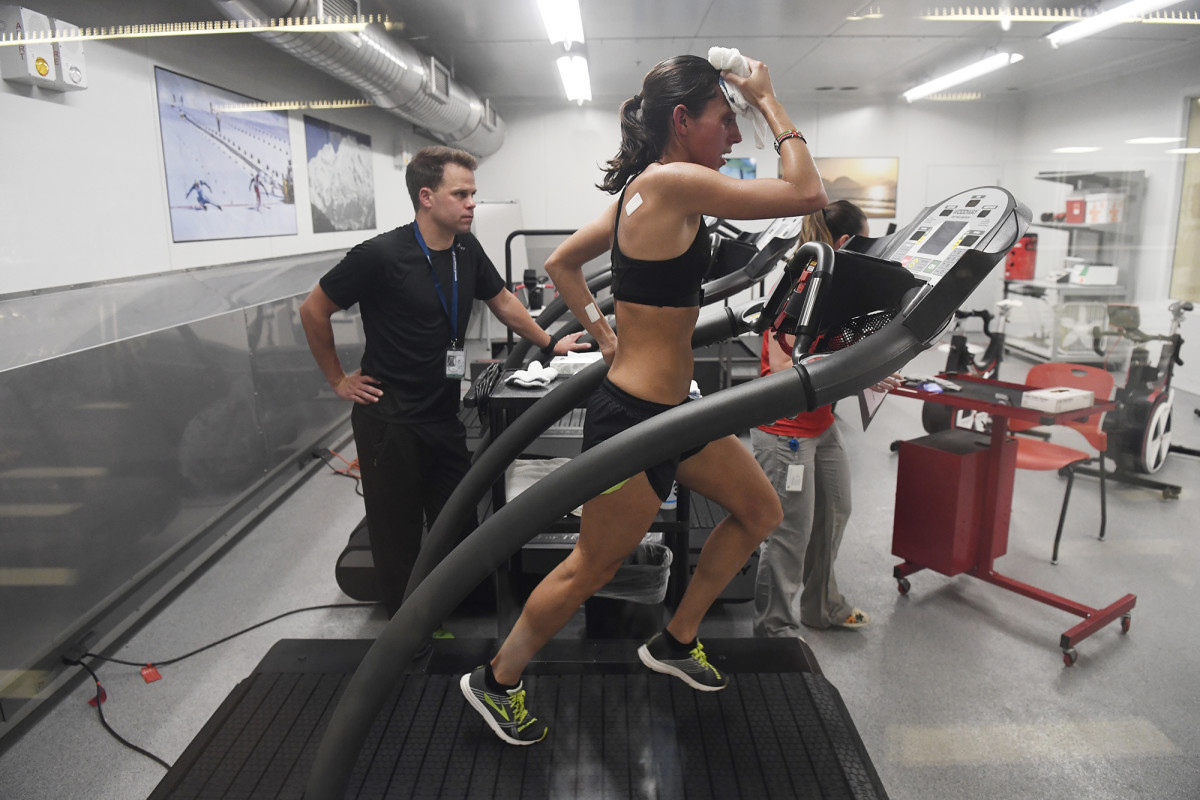Olympian Desiree Linden looks to end 32-year U.S. drought at Boston Marathon

For Desiree Linden, just getting past the five-kilometer mark in Rio de Janeiro was a small victory en route to her seventh place finish in the marathon at the 2016 Summer Olympics. Eight months later, Linden has her sights set on a much larger goal—winning the Boston Marathon.
No American woman has won Boston since Lisa Rainsberger (previously known as Lisa Larsen Weidenbach) did it in 1985. Linden has come the closest in recent years—she finished just two seconds behind champion Caroline Kilel of Kenya in 2011.
Fellow U.S. Olympic marathoner Shalane Flanagan, who is the second-fastest American marathoner of all-time and holds the American course record in Boston, is usually the subject of many stories around this time of year. She’s a native of Marblehead, Mass., and considered one of the favorites to win Boston whenever she’s entered. She’s vocal about how it remains a bucket list item for her but was forced to pull out of this year’s race due to a back injury.
That’s where the attention turns to Linden to try and end the drought.
All the special edition Boston Marathon 2017 running shoes out right now
“I feel like I said I’d like to win in 2011 and no one really cared,” Linden says. “In 2015, I said it again. No one really cared. I’ll keep saying it whether people are paying attention or not. Coming off a great Rio, people are more inclined to listen. I think that when Flanagan is out, people think ‘Well, who is the next best bet?’ That falls to me based on a personal best standpoint. It’s easy to look down the list and I think there’s a great field of Americans.”
An influx of East African and international runners have contributed to the United States’ victory droughts on the men’s and women’s elite races. There was also a decline in the American women’s elite marathoning across the World Marathon Majors, which consists of Berlin, Boston, Chicago, London, New York City and Tokyo. American record holder and Olympic bronze medalist Deena Kastor was an outlier in the era that followed Joan Benoit Samuelson’s record-setting performances and gold medal at the 1984 Olympics.

Kastor is the last American woman to win one of the world marathon majors with her 2005 Chicago Marathon and 2006 London Marathon victories. A women’s American champion in Boston has only become a reality in the last seven to eight years. Flanagan, Linden and two-time Olympian Kara Goucher are the second, fourth and fifth fastest American woman over 26.2 miles and none of them started running marathons until 2007.
Inside look: Joyciline Jepkosgei’s training ahead of half marathon world record finish
In her 10 years of racing the marathon, Linden’s 5'2" frame stands out, but has found its place on the shoulders of East African giants. She broke out with her close call on Boylston Street in 2011 and then she made the 2012 Olympic team. A stress fracture before London caused her to drop out before the five-kilometer mark. After almost a year-long break, she returned to racing in June 2013 and then ran 2:29:15 at the Berlin Marathon in September. She’s recorded top 10 finishes in every major marathon since 2008. Most recently, she was the top American at the 2015 Boston Marathon and then took second at the 2016 U.S. Olympic Trials. Flanagan took sixth in Rio with a 2:25:26 run before Linden finished 42 seconds later.
A blue-collar ascetic has been a constant variable in her training as a runner. For this training block, she spent a short time at altitude in Mammoth Lakes, Calif., to build her base mileage and then split time in Michigan and Florida before quick trips to race the NYC Half and to scout the course in Boston. Her training mileage was over higher than ever before the Boston Marathon—she topped out at 130 miles per week and held it for about three to four weeks. The final touches of her training took place back in Florida.

“I think she’s had her best training segment that she’s had. Better than 2011 and better than her Rio buildup,” coach Kevin Hanson says. “She ran well in Rio but when we finished Rio, I started to think that her next race is going to be her big one.”
With a strong tailwind in 2011, Linden found herself at the back of the leader’s pack and stayed with the leaders with seven miles to go and picked off those who paid the price of an aggressive pace. Linden was second in 2:22:38. At the 2015 Boston Marathon, Linden led the race for about 20 miles before finishing fourth in 2:25:39. The plan then was to keep the pace honest and eliminate any major kick by the East Africans. (Only so much can be done against some competitors. In 2014, Rita Jeptoo, who later tested positive for EPO, bolted away from the field in the final 5K. She ran a 4:48 split for her 24th mile, nearly as fast as men’s champion Meb Keflezighi’s 4:47 for the same mile.)
Shalane Flanagan's mile-by-mile course guide to the Boston Marathon
In a time when controversies surrounding shoes or positive tests are common, Linden simply takes it all in. She consumes all the latest about the sport and openly discusses it as if she’s on a local sports talk radio show. She may never know if all her competitors are clean. She may notice the high-tech shoes on some other women on the starting line. Like in practice, the blinders come on and the objective is to run fast.
“For me, it’s using what you have and believing that’s enough,” Linden says. “When it isn’t ask yourself, ‘Is there more to give?’ and usually when you ask, there’s something else that’s there. Believe in yourself and you’ll discover that there’s more levels that you can dig to. That’s how I’ve always approached things. Am I doing everything I can?”
Only four of the women in the Boston Marathon field have a faster personal best than Linden. Three of them have run under 2:20. Linden has proven herself capable of sticking to a plan and it successfully working out. The objective for Boston has been made clear and she plans on sticking to it again.
The Best Men's Running Shoes 2017
“The whole game plan is that we want to be the best finisher off a certain pace,” Hanson says.
The recipe for winning in Boston takes pieces of the foundation and lessons learned from 2011’s run and factors in the evolution of Linden as an athlete. Linden occasionally looks at her 2011 pre-Boston training log for reference. A lot of the workouts are similar but her approach to training is different—she’s much stronger now, in many ways.
“I think I have a bigger range to work with than ever before,” Linden says. “It’s about getting to 20 [miles] and racing really gritty and tough. The biggest thing I took about Boston 2011 is that I pictured myself winning that race like having a 30 second gap and celebrating down Boylston Street.”
“Now every time I picture myself winning Boston, it’s in a sprint finish down Boylston. I’m prepared for all those things mentally,” she says.
